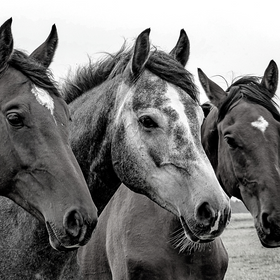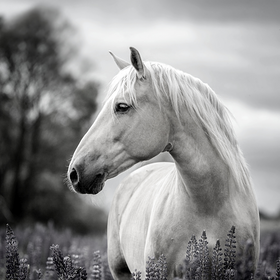
Discipline Dive: Dressage
Dressage (derived from a French word meaning “to train”) is a style of riding with the goal of producing obedient, supple, and responsive horses. Modern Dressage has two sides; the training side where the horse and rider develop the fundamentals and the competition side where these movements are combined into a Dressage test. The level of difficulty ranges from Training Level to Fourth Level, USA National Levels to FEI (Federal Equestrian International) Levels. FEI Levels are the most advanced and are performed around the world.
Most Dressage tests are completed in a 20 x 60 meter ring, though a smaller ring is sometimes used if space is limited. Each test is comprised of different movements, all scored individually from 0 to 10 (10 being excellent). The entire test is also given four general impression scores. The total points are then added and divided by the total possible score to give a percentage.
Dressage horses should be able to perform three elastic and regular gaits: a four-beat walk with no suspension, a two-beat trot with a moment of suspension between each diagonal beat, and a three-beat canter with a moment of suspension following the three-beats. Balance of both the horse and rider during each of these gaits and movements is very important in Dressage. It takes a long time to learn Dressage, but most Dressage riders will tell you it helped them build an unparalleled bond with their horse.

Dressage is a form of English riding, so you will notice some similarities between Dressage and English tack. One noticeable difference is the length of the saddle panels (the leather that drops down and around the horse’s stomach). Dressage saddles have longer panels because Dressage riders ride with a longer leg position. In some Dressage saddles, you’ll also notice a larger knee block (like the one in the photo above). This knee block is designed to stabilize the rider’s leg. Unlike English saddles, Dressage saddles are almost always seen in black. This is a competition regulation that found its way into the training ring.
Dressage and English bridles are exactly the same in the lower levels of Dressage. Double bridles are often used for higher-level dressage horses, giving the rider the ability to relay more subtle cues.
History of Dressage
The history and evolution of Dressage is incredibly interesting. The concept of Dressage can be tracked back to 350 BC when Athenian soldier Xenophon completed a manual titled ‘On Horsemanship’. It wasn’t until later in the 16th and 17th centuries that Dressage became more of an art form to be practiced and refined.
Dressage became an Olympic Sport in Stockholm in 1912, originally for military officers only. The growing enthusiasm for the sport led to the evolution of the rules in 1953 to allow civilians to compete. The United States Dressage Federation (USDF) was founded in 1973 and works to govern the rules of the discipline in the United States. The Federation Equestre Internationale (FEI) is the sole authority worldwide. The FEI has an amazing history section on their website with photos of Dressage competitions from the past 100 years.





